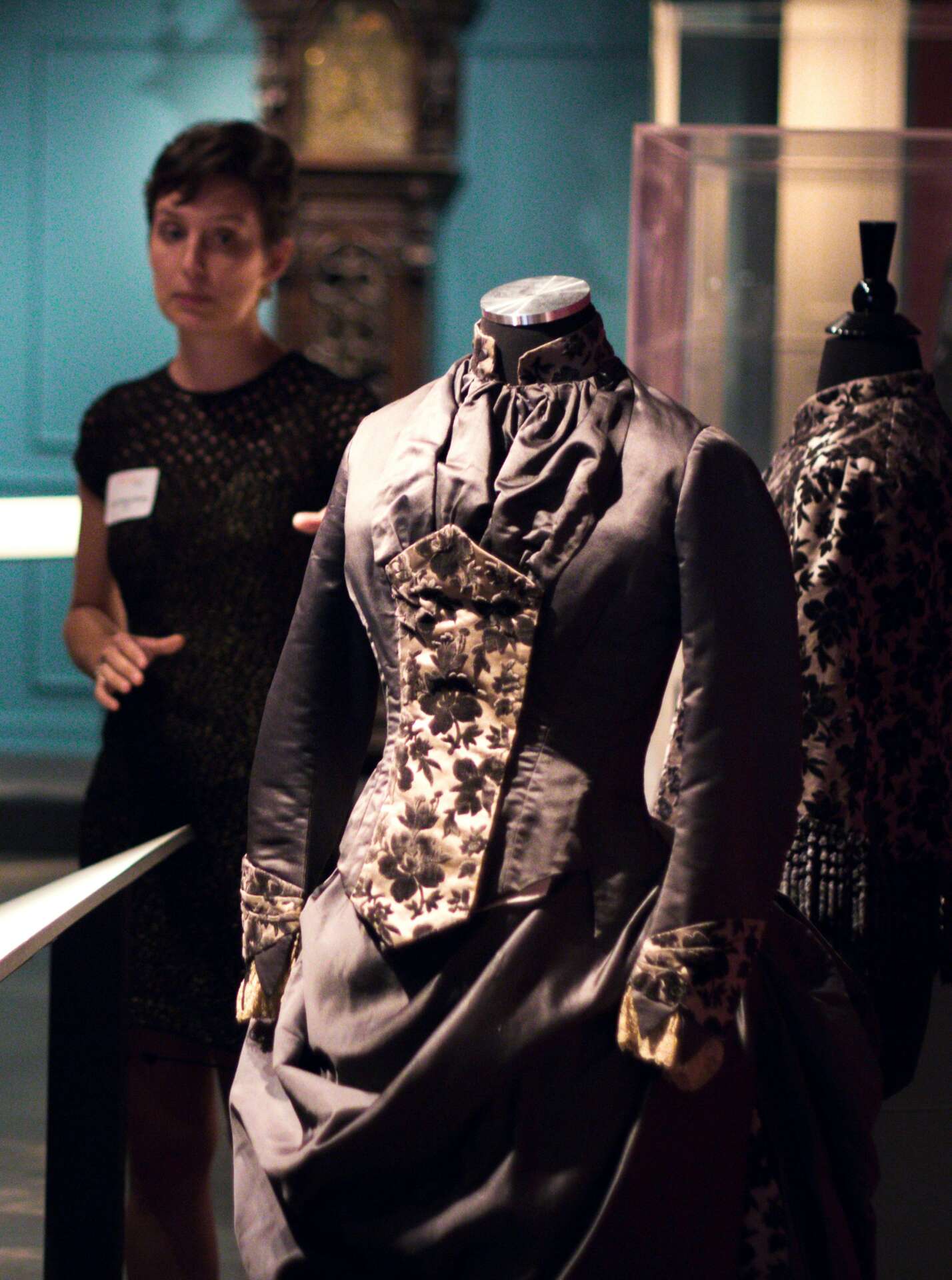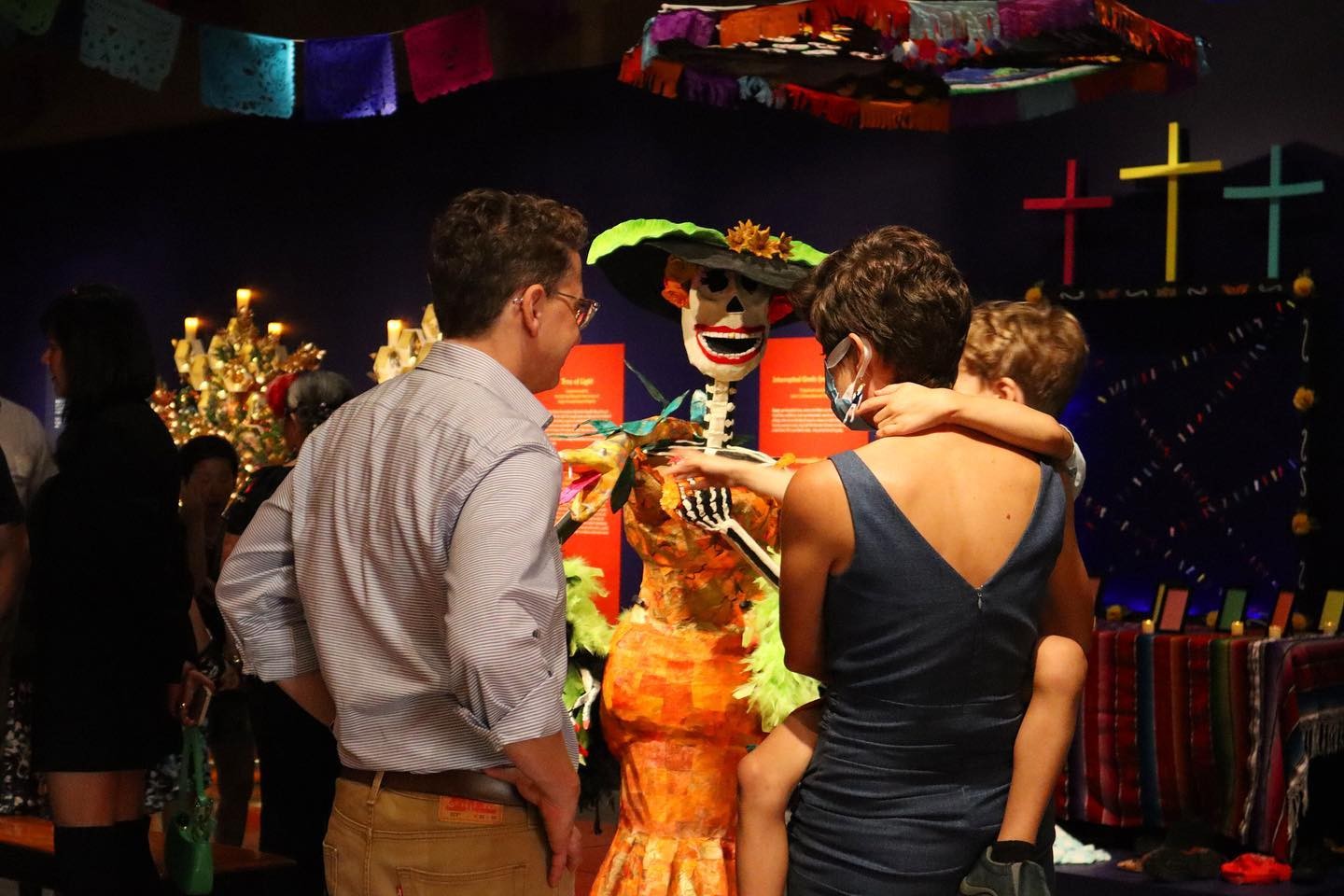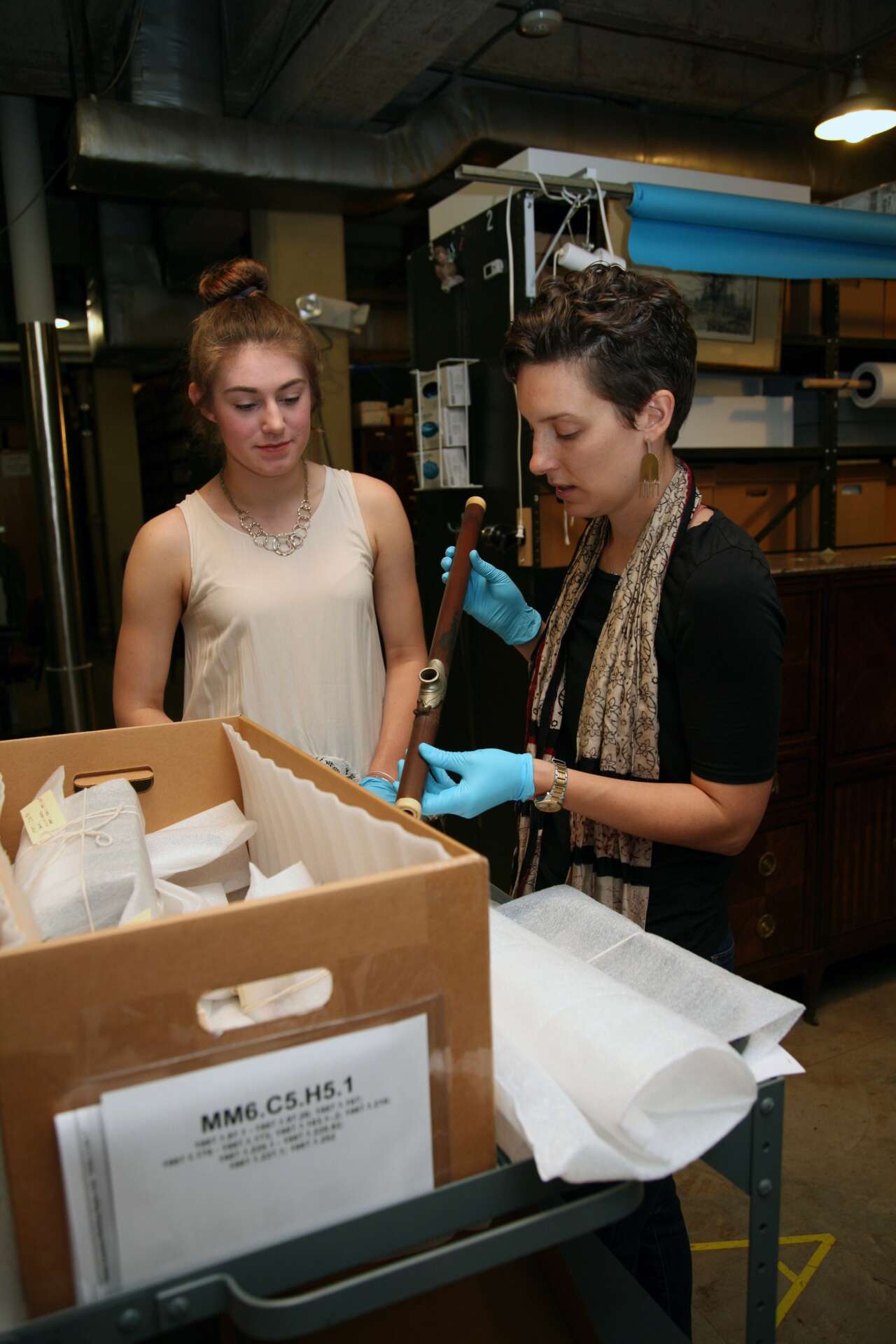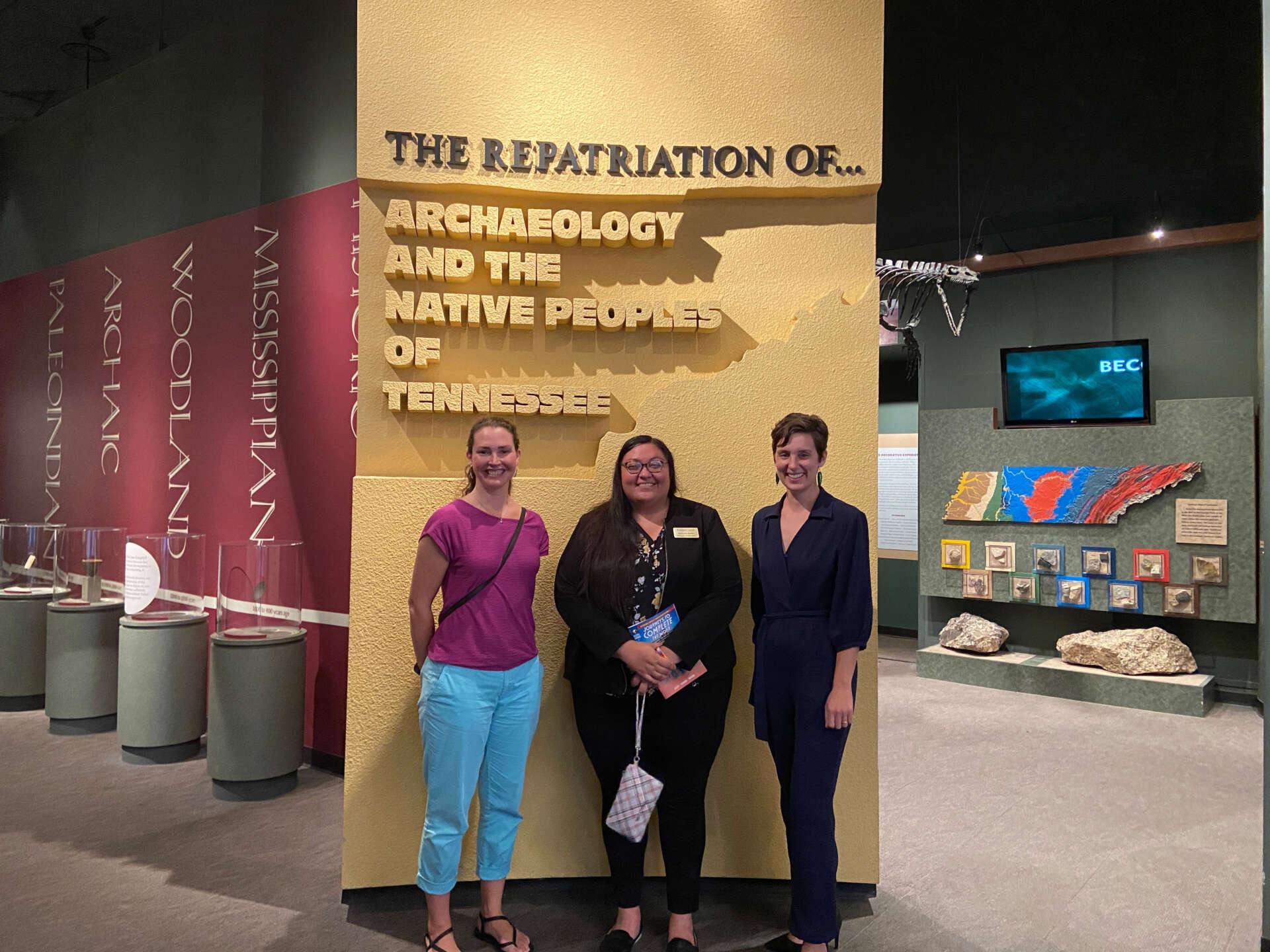We caught up with the brilliant and insightful Cat Shteynberg a few weeks ago and have shared our conversation below.
Alright, Cat thanks for taking the time to share your stories and insights with us today. We’d love to hear about a project that you’ve worked on that’s meant a lot to you.
I work at the McClung Museum at the University of Tennessee, Knoxville, but have worked in multiple museums across the US. The most meaningful project I’ve worked on so far in my career is a current exhibition that I’m working on, tentatively titled: “A Sense of Indigenous Place: Native American Voices and the Mound at University of Tennessee, Knoxville.”
The exhibition, which was the brainchild of Professor Lisa King, will run from August 2024–August 2026, is part of an effort to change perceptions and educate audiences about the Native American mound on our campus—the oldest human-made structure at University of Tennessee, dated 600–1000 CE by archaeologists. Native American mounds were constructed by heaping soil or other materials on the land for ritual, political, or burial purposes.
The most important aspect of the exhibition is that it is done entirely in collaboration with Native American Nations with historical ties to Knox County. Led by Native Nation co-curators, the exhibition will revisit and interpret the mound from Native perspectives. This can’t be overstated. Museums have been talking for years about inclusivity and decolonizing the museum space, but have been so slow to act on actually including Indigenous and other source communities in their work.
My first museum job was when I was 19 years old and I was interning and working at the American Museum of Natural History in New York City. I was working as an educator in their gallery about the Native Americans of New York and we consistently had 5th graders coming in for their measly one week of Native American education. When I asked those students if the people depicted in the gallery were still alive, they almost always said, “No!” At that point, I decided I wanted to be a curator because I realized that without good storytelling, even a great educator would have a difficult time shifting the narratives we learn about history.
“The Sense of Indigenous Place” project is exactly the kind of project I wanted to work on as a young museum professional. It has taken me many years, but I’m finally in a place in my current institution and career where this kind of work is possible. Regardless of what kinds of mistakes I will inevitably make throughout the exhibition process, co-curation and creation is where museums must head to be relevant.

Cat, love having you share your insights with us. Before we ask you more questions, maybe you can take a moment to introduce yourself to our readers who might have missed our earlier conversations?
I grew up in a rural community in Kentucky, and though I was privileged to travel quite often with my family, I didn’t have access to museums. I fell in love with museums and learning about other cultures in college. I remember being horrified as an 18-year-old at how many lies I had been taught in history books growing up. I devoted much of my time and energy in college to traveling and interning in my campus museum (shoutout to the Hood Museum at Dartmouth College) and other cultural institutions.
To me, “curating” means to shed new light on histories or ideas using material culture. Once I realized this was my passion, I knew I wanted to go to graduate school. I earned a scholarship to study Material Anthropology and Museum Ethnography at Oxford University in England, and after graduating, I returned to the states and served in positions at the Hood Museum of Art at Dartmouth College, the National Museum of Women in the Arts, and the Smithsonian Institution Archives, among others, before coming to the McClung Museum at the University of Tennessee, Knoxville.
Most curators go on to graduate school to study a very narrowly defined area of art or culture, but I always wanted to be a generalist. One thing that sets me apart from other curators is that I don’t have a PhD and that I work with all different types of art. When you’re a generalist, I think you realize on an everyday basis that you need to rely on other experts (those with PhDs or not) to do your work. This kind of collaboration and back-and-forth both with experts and with my co-workers makes my work different than some curators, who operate very independently as sole experts.
No one person can know everything, and this is especially important to remember when your work focuses on representation of cultures (especially those that aren’t your own). I never felt comfortable being an anthropologist making a monograph on someone else’s culture, and so I’m happy to have been able to carve out a niche working with communities and students. Working with others is my happy place, and I love that I learn something new every day on the job.
Can you tell us about a time you’ve had to pivot?
I was diagnosed with brain cancer in 2016, not long after my child was born. So, I not only had to pivot in terms of being a new mother working a full time job, but I also had to take time off work to have brain surgery and recover. I’m currently back in treatment on an experimental chemo drug. People can live for long periods of time with the cancer that I have, but it is unfortunately uncurable.
Thinking about my mortality is of course heavy, but it has also been such a push to do the things I want right now, and not wait for a later I’m not guaranteed. My cancer led me to my current project about the Mound, and to collaboration with Native Nations. I’m more outspoken and courageous about the things I think are important in my life and my work. Centering my work on dignity and compassion has become more important.


Have any books or other resources had a big impact on you?
Mindfulness and Buddhism has significantly changed my personal thinking and also the way that I manage and operate in my professional life. I especially love Tara Brach’s talks, which I listen to on a weekly basis (https://www.tarabrach.com/talks-audio-video/).
There are a few things that are quite universal in mindfulness practices that I’ve found very useful. The first is the pause. Pausing, taking a deep breath, and noticing the places that are tight in our bodies, especially when we feel angry or impulsive, is such a helpful technique. I find it’s easy to get caught up in the story of why something is happening, or how someone else is wrong, and this is so rarely helpful, especially when managing other people. Just paying attention to the immediate surroundings often gives the chance to get out of the trance of whatever story we are weaving, or to understand that our emotions are “just like the passing clouds” as many Buddhists say. This gives the space to react calmly and with equanimity to a situation. I find it also helps with being a good listener, rather than simply waiting to say what we’re thinking in our heads.
The second concept is letting go of control. People that are high achieving are also often Type A personalities, and by definition, we also like to think we can exact control over situations by carefully planning and working hard. The “tyranny of the busy” often comes into play in the workplace–that we’re too busy to do this or that, or we’ve micromanaged our time down to the minute. Covid magnified this behavior a lot as well by taking away that sense of control. Tara Brach says that busyness is often a cover for feelings of unworthiness or deficiency, and I have to agree. As I have become more unwilling to unpack the areas where I try to control, I find that there are often unresolved feelings, memories, or situations that are underneath them. Creative work is messy, and so is collaborating with communities. The more we can coach ourselves and our teams to be okay with uncertainty, the more exciting the work is, and the more flexible and nimble (and kind) we become.
Contact Info:
- Website: https://mcclungmuseum.utk.edu/
- Instagram: https://www.instagram.com/mcclungmuseum/
- Facebook: https://www.facebook.com/mcclungmuseum/
- Linkedin: https://www.linkedin.com/in/catherineshteynberg/
- Twitter: https://twitter.com/McClungMuseum
- Youtube: https://www.youtube.com/channel/UCjFoe00tENzRX-ApNTCPhzQ


